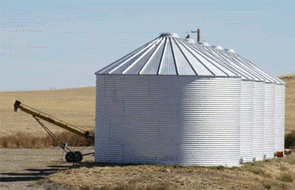
Content supplied by Federated Farmers
Grain growers will be heading into the next harvest with silos completely empty, and an emerging potential for shortages.
This is according to a recent study published by the Arable Industry Marketing Initiative (AIMI).
David Clark, Federated Farmers Grain and Seed vice-chairperson, says this time two years ago there was a glut of wheat and barley available to end-users.
"That has now been obliterated," he says.
"Twenty-four months ago the market had a big surplus of carry-over stock heading into the end of the year."
"Last year we made a big dent in that surplus, but these latest figures show that it has now disappeared."
"Strong market demand from all end-users, especially the dairy industry, as well as smart decisions by arable farmers, has meant the market is now more aligned, and in fact, I would expect we may be heading into a time of shortages."
"At 26,000 tonnes, the amount of feed wheat, which is stored on farms available to the market, is less than half of the 53,000 tonnes that were sitting there this time last year, and less than a third of what was there in 2012."
David Clark says feed barley has been slightly more stable, but is still at much lower levels than the previous two years, with 2014 availability at 22,300 tonnes un-sold, on farm, compared with 32,000 in 2013 and 66,000 in 2012.
"For some, remaining stocks of 47,300 tonnes of barley and wheat might sound like a lot. But it represents only about seven percent of the total grain harvested, and with still three months or so before grain from the new harvest becomes available."
Farmers who want to feed grain through to early next year will need to lock something in to tide them over.
He says un-sold stocks on farm aren't the whole picture.
"It's also important to look at the amount of stock that has been sold, but still sits on farm and is yet to be consumed."
"Again, the report shows that this is significantly less than in the previous two years, with only 66,068 tonne of feed wheat and 53,434 tonnes of feed barley waiting to be delivered to those who had pre purchased to cover themselves at the back end of the year."
“Across all of the major grain types, more tonnes of grain have moved to end users than in the previous four years, and these deliveries have occurred earlier in the season."
"What's more, assuming the strong demand continues, the area of feed wheat and barley harvested in 2015 doesn't look like it’s going to be a bin buster."
"At 37,700 ha, the area of feed wheat is only roughly the same as the area that was harvested in 2014 and although barley is showing a projected 15 percent increase, at 63,000 ha, a staggering 18,000 ha of area designated as yet to be sown as of 10 October and therefore reported in the survey as 'intended'.
"With a dry period descending on the South Island, I would imagine that much of this planting may not take place, and the yield of the area that does go into barley at this late stage may be compromised.
"Overall, it is very positive that we will be harvesting into empty silos, and the survey figures point to expected harvest areas being in line with recent years. Certainly there is nothing to suggest that there will be a surplus of grain begging for a home at harvest time," David Clark concluded.




We welcome your comments below. If you are not already registered, please register to comment.
Remember we welcome robust, respectful and insightful debate. We don't welcome abusive or defamatory comments and will de-register those repeatedly making such comments. Our current comment policy is here.